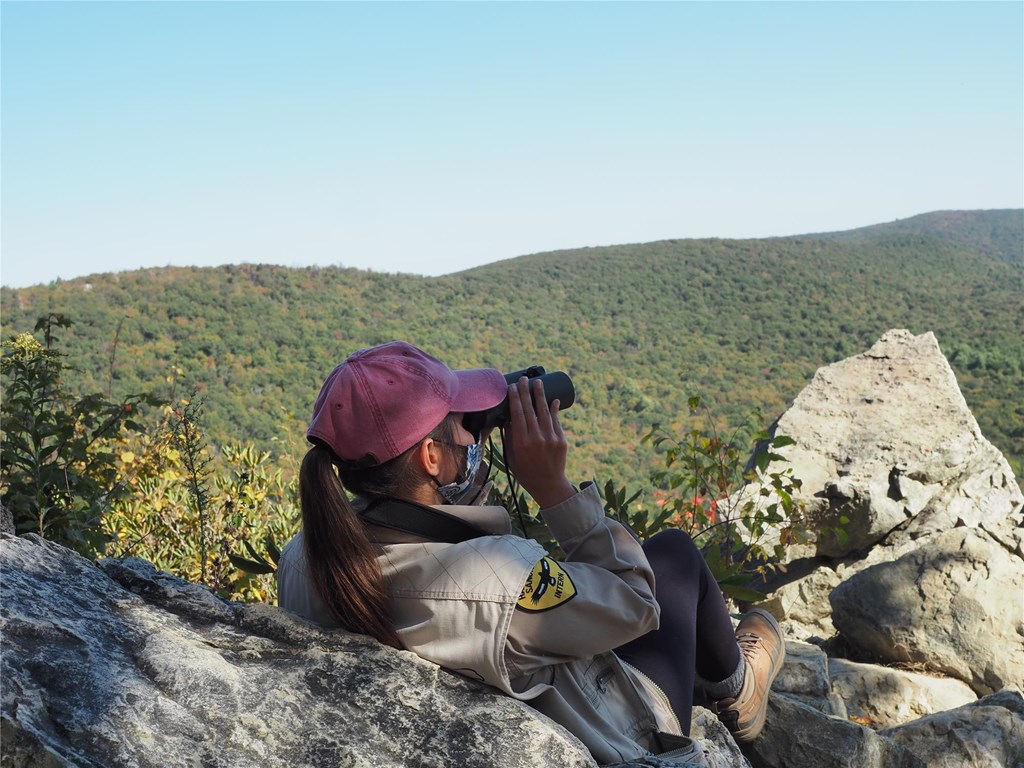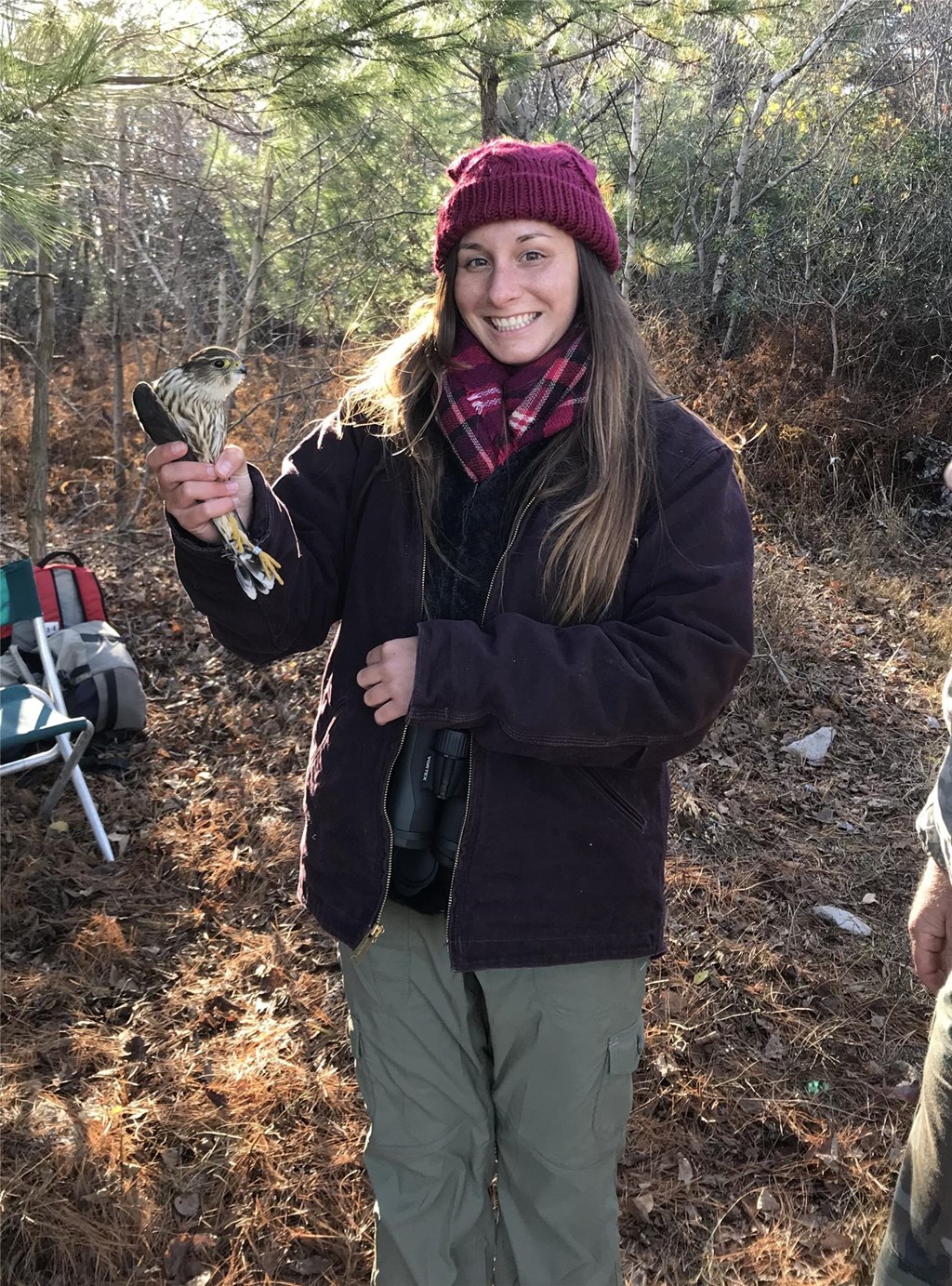Best of Both Worlds
Posted on in On the Mountain by Alyssa Polanksy, 2020 Conservation Trainee

Science and education go hand in hand. I like to think of their relationship as a locked treasure chest and a key, science being the locked chest and education being the key. Science offers a wealth of knowledge, understanding, and curiosity. Education opens that wealth of knowledge so it can be shared with others. I joined the Hawk Mountain Sanctuary team in 2019 as a summer education trainee where I learned all about teaching others about raptor conservation and the secretive world of wildlife. I was fortunate enough to return to the mountain as a fall 2020 conservation science trainee. As a conservation science trainee, I’ve had the opportunity to add to that ever-growing wealth of environmental knowledge.
As a conservation science trainee, I was able to assist with the longest running raptor migration count in the world. I once read the quote, “A bad day at Hawk Mountain is better than a good day anywhere else,” and that is how I describe my experience at the lookouts. When it was rainy or the hawks weren’t flying, I’d find myself admiring the beautiful countryside and talking with visitors. I would help newcomers identify their first hawk or receive hawk-watching tips and tricks from veteran birders. These interactions solidified the idea that nature brings people from all walks of life together. For those familiar with Hawk Mountain Sanctuary, when the hawks are flying, it is something to behold. From merlins diving on the decoy owl to bald eagles soaring in the clouds, witnessing raptor species undergo the strenuous journey of migration so gracefully is something that sticks with you. Spinning the words of Forrest Gump, the days on the lookouts are like a box of chocolates, you never know what you’re going to get and that makes it all the more exciting.

When not at the lookouts, I was able to assist with Hawk Mountain’s raptor research projects and get hands-on field experience, from trapping and tracking vultures and American kestrels, to banding Northern saw-whet owls. I remember talking about trapping and tracking raptors as an education trainee, but now as a science trainee, I am actively involved with it. When you have experience with something, it makes it easier to teach it to others. Returning to the chest and key metaphor, being familiar with the lock makes it easier to open with the key. I have also learned that studying wild animals takes patience. Animals don’t get a memo that they should be in a certain location or walk into a certain trap, although many researchers wish they did. They have their own minds and instincts, some being more stubborn than others. My experience staring through a scope for 30 minutes waiting for a black vulture to slightly move its wing so I could get a tag reading can attest to this. But when the day comes that you do get to handle that magnificent bird of prey and learn more about them, all the waiting was worth it.
I feel so fortunate to have experienced both traineeships. Education taught me the importance of sharing knowledge and opportunities with others, and science has taught me the importance of adding to that knowledge. Even though we see it every day, nature is still full of mysteries waiting to be solved. Once my traineeship comes to an end, I plan on pursuing more seasonal work experiences to build my wildlife biology skill set and further expand my environmental knowledge. So far, my journey has taken me from the shores of Georgia working with sea turtles to the mountains of Pennsylvania working with raptors. I can’t wait for the next step of this journey, wherever it may be.